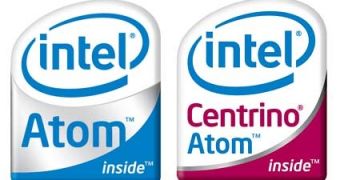The upcoming computer models built around Intel's Atom low-cost processor will be mostly shipping with a Linux-based operating system. You may remember the second generation of Asustek's Eee PCs, which has been announced to support Windows XP; however, it will also sell in Linux flavor in order to keep costs to the minimum.
Cutting costs down is the main reason for the advent of the Atom processor. When it finally makes it to the market, it will feature a $24 price tag for 1,000-tray units. Its low price is expected to allow system integrators and PC vendors to create computer models to sell for at most $499.
However, there is no sense in creating an inexpensive piece of hardware to sell for, say $200, then inflate its price to $400 by including a proprietary operating system with a commercial license. This is the case of a Mirius desktop computer that sells in either Linux or Windows XP flavors. While the Linux-based device sells for $299, the Windows XP offering comes with a total price tag of $419. The Linux machine is 25 percent cheaper than its Windows-based sibling.
The Mirius system is built on Intel's Celeron D 420 CPU, which currently sells for $34 and is listed as the cheapest offering in Intel's CPU portfolio. The advent of the Atom processor will allow the CPU manufacturer to gain ground on the ultra-low-cost sub-notebook market.
Asustek's Eee PC is one of the ideal candidates for an Atom transplant. While it will be available with Windows, the Linux-based edition will dramatically cut down on pricing. The upcoming sub-notebooks built around the Atom processor may be pitched at the emerging markets, but the Eee PC's success worldwide taught manufacturers that inexpensive products can be extremely appealing.
"In emerging markets it will be a first PC. In mature markets, it will be a second or third PC within a household," said Dean McCarron, founder and principal of Mercury Research.

 14 DAY TRIAL //
14 DAY TRIAL //